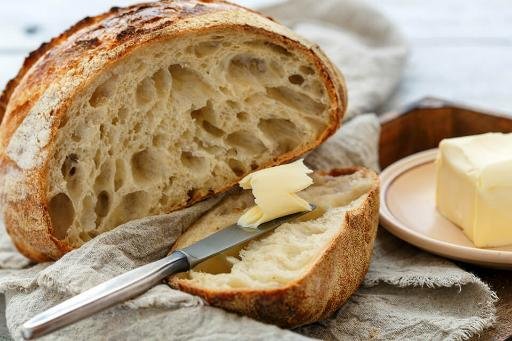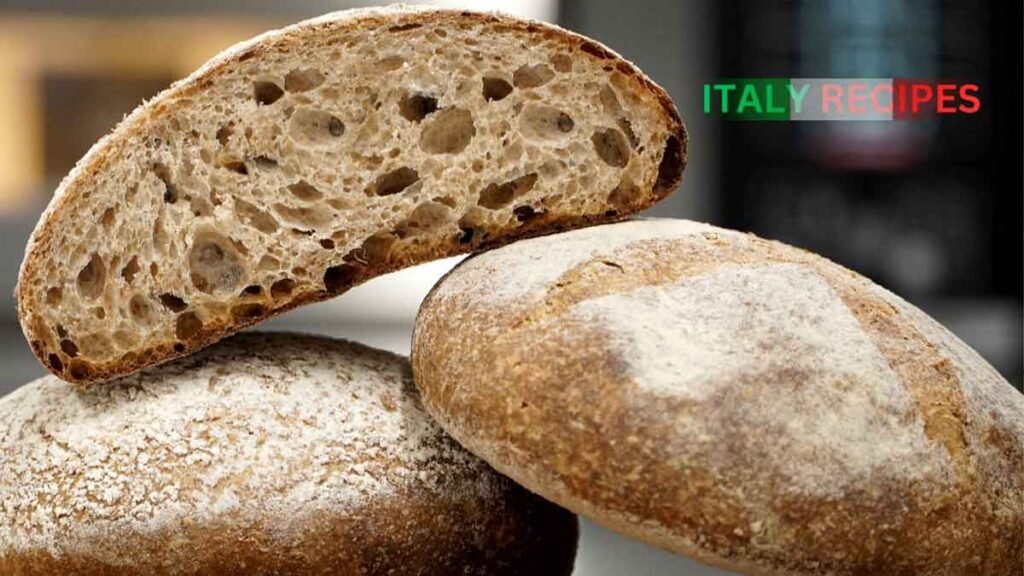Imagine the smell of fresh bread baking in your kitchen. The sound of the crust crunching when you take a bite. And the soft, tasty inside that feels so special. Making bread is more than just a task; it connects you to traditions passed down through generations. Creating an authentic biga bread at home is one such tradition.
Biga is key to many traditional Italian breads. It adds a unique flavor and texture. This Italian Biga Bread Recipe will help you make this bread. It’s perfect for both new and experienced bakers who want to make an artisan-quality loaf at home.
Whether you want to impress guests or just enjoy homemade bread, learning about biga will improve your baking. Let’s start this fun baking journey together, making one loaf at a time.
What is Biga?
Biga is a special ingredient used in traditional Italian baking. It’s key for making classic italian biga bread. This ingredient makes the bread taste unique and gives it a light texture. Adding a biga starter to your rustic italian bread recipe boosts the flavor and makes the loaf better.
Origins of Biga
Biga comes from Italy and has been a bread-making staple for centuries. It was created to make bread taste and feel better by fermenting some dough early. This method is a big part of Italian cooking, making biga a must-have for classic italian biga bread.
Importance of Biga in Bread Making
Using biga in bread has many advantages. It lets dough ferment early, creating deeper flavors. This makes the bread taste richer and more complex. Plus, bread with biga stays fresh longer, which is great for any rustic italian bread recipe. Biga also improves the bread’s texture, making it more appealing and of higher quality.
Ingredients Needed for Italian Biga Bread Recipe
Making homemade biga bread is easy with a few simple, quality ingredients. Knowing what you need ensures your bread is always perfect.
Primary Ingredients
For easy Italian biga bread, you’ll need these main ingredients:
- Flour: High-gluten or bread flour gives the best texture.
- Water: Use filtered or bottled water to keep the dough clean.
- Yeast: Active dry yeast makes the biga starter.
- Salt: It boosts flavor and strengthens the dough.
Optional Add-ins
Add your favorite touches to easy Italian biga bread with these extras:
- Herbs: Rosemary, thyme, or basil add aroma and flavor.
- Olives: Chopped, pitted olives give a Mediterranean flavor.
- Garlic: Minced garlic adds a rich, savory taste.
- Sun-dried Tomatoes: These bring sweetness and texture.
Preparing the Biga Starter
Starting with the biga starter is key to making perfect artisan Italian bread. This step is vital for the best biga bread recipe. It makes a strong and tasty pre-ferment. This sets the stage for a great loaf.
Steps to Make the Biga
First, collect your ingredients: 200 grams of bread flour, 100 grams of water, and a small pinch of yeast (about 1 gram). Mix the flour, water, and yeast in a bowl until a rough dough comes together. Knead it for a few minutes until everything is well mixed.
Then, cover the bowl with plastic wrap or a clean towel. Let it rest at room temperature for 12-16 hours. This time lets the yeast work and develop the flavors for your bread.
Fermentation Process
The fermentation step is crucial for your biga. It lets the yeast work on the flour, breaking down sugars and making carbon dioxide. This makes the bread taste better and gives it a chewier texture.
Remember, the temperature affects fermentation. Keep it around 70°F (21°C) for a slow and steady rise. This slow process is what makes the best biga bread recipe special.
When the biga is done, it looks bubbly and smells slightly sweet and tangy. Now, it’s ready to mix into your dough. This will help you make your artisan Italian bread.
Making the Dough
Mixing your biga starter with water and more flour is key. This mix is essential for the authentic taste and texture of *traditional biga bread recipe*.
Start by putting the biga in a bowl. Then, add water and flour, mixing until it’s all combined. Next, add yeast and salt. Kneading the dough well is crucial to make *biga bread from scratch*.
Kneading makes the dough smooth and elastic. It usually takes 10-15 minutes by hand. With a stand mixer, use the dough hook on medium speed for 8 minutes.
This step is important for a good crumb structure in any *traditional biga bread recipe*. It also makes sure ingredients are evenly spread.
The way you knead affects your bread’s texture. The stretch and fold method helps with gluten and a open crumb. Or, try the slap and fold for a chewier dough. Finding the right technique is part of *making biga bread from scratch*.
After kneading, let the dough rest and ferment. This step is crucial for the dough to rise and get that airy feel. Remember, practice and patience are key to making great biga bread.

Shaping and Proofing the Loaf
Shaping and proofing your easy Italian biga bread is key. It shapes the bread’s look, feel, and taste. Learning the right steps will give you a bread with a great texture and flavor.
Shaping Techniques
When shaping, handle the dough gently to keep air bubbles in. For a boule, stretch it into a rectangle, fold the edges in, and then tuck the sides under. This makes a tight ball. For a batard, fold the dough sides to the middle and roll it into a shape.
This method helps the dough rise well in the oven.
Proofing Tips
Proofing is vital for your biga bread. Put the dough in a basket or on a baking sheet, cover it, and let it rest. The best proofing spot has 75% humidity and a 70°F temperature.
Don’t let it get too warm or too cold. Watch the dough. When it’s almost doubled in size and feels soft when pressed, it’s time to bake.
Conclusion
Making biga bread from scratch is a wonderful way to connect with the art of baking and produce a delicious and satisfying result. So, roll up your sleeves, gather your ingredients, and embark on a baking adventure that will not only fill your home with warmth and aroma but also leave you with a sense of accomplishment and a tasty treat to enjoy.
FAQ
What is Italian Biga Bread?
Italian Biga bread is a traditional, rustic loaf. It uses a pre-ferment called Biga for flavor and texture. This method is key to making artisan-quality bread at home.
How do I make a Biga starter?
Mix flour, water, and a bit of yeast to make a Biga starter. Let it ferment for 12-16 hours at room temperature. This step creates a flavorful base for the bread.
Why is Biga important in bread making?
Biga is vital for enhancing the bread’s texture, flavor, and freshness. It supports longer fermentation, leading to a complex taste and a loaf that stays fresh.
What ingredients do I need for Italian Biga bread?
You’ll need flour, water, yeast, and salt for Italian Biga bread. You can also add herbs, olives, or other flavors to make it your own.
What is the fermentation process for Biga?
Fermenting Biga means letting the dough rest at room temperature for 12-16 hours. This long fermentation develops complex flavors and affects the bread’s texture.
How do I transition from Biga to bread dough?
Mix the Biga starter with flour, water, yeast, and salt to create the bread dough. Knead until it’s the right consistency, focusing on gluten development and texture.
What are some shaping techniques for Italian Biga bread?
You can shape the dough into boules or batards. Proper shaping leads to an open crumb and a crusty outside.
How do I proof the loaf before baking?
Proofing lets the shaped dough rest and rise before baking. You can do this at room temperature or in a controlled environment. Consider temperature and humidity for the best results.

